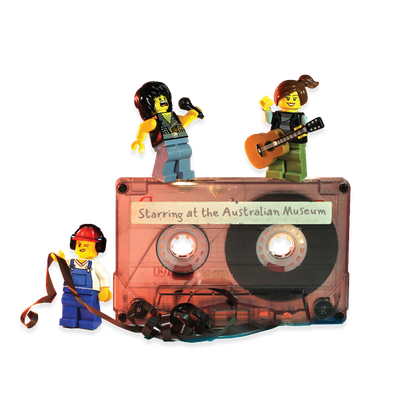Your search returned 109 results
By Page Type
By Tag
- All
- fish (966)
- blog (698)
- fishes of sydney harbour (401)
- First Nations (296)
- Blog (236)
- AMRI (169)
- archives (165)
- Aboriginal and Torres Strait Islander (135)
- Eureka Prizes (134)
- insect (126)
- Ichthyology (124)
- geoscience (109)
- minerals (102)
- climate change (97)
- podcast (94)
- Fish (91)
- Anthropology (89)
- International collections (80)
- Minerals Gallery (78)
- wildlife of sydney (78)
- Labridae (77)
- frog (73)
- gemstone (70)
- photography (67)
- history (63)
- Mollusca (60)
- staff (60)
- gem (59)
- Birds (56)
- Gems (56)
- Indonesia (56)
- education (55)
- shark (55)
- AMplify (54)
- people (53)
- exhibition (51)
- earth sciences (50)
- past exhibitions (50)
- Gobiidae (48)
- Pomacentridae (45)
- sustainability (45)
- Serranidae (44)
- science (44)
- lifelong learning (42)
- Earth and Environmental Science (41)
- Syngnathidae (41)
- Ancient Egypt (40)
- Bali (40)
- bird (40)
- dangerous australians (40)
-
Linarite
https://australian.museum/learn/minerals/mineral-factsheets/linarite/This is one of the best linarite specimens in existence. Its chemical composition is lead, copper hydroxy- sulphate.
-
Silver with Acanthite
https://australian.museum/learn/minerals/mineral-factsheets/silver-with-acanthite/This magnificent twisted crystalline wire silver with acanthite (silver sulphide) is from the classic old locality of Kongsberg, Norway.
-
Anglesite
https://australian.museum/learn/minerals/mineral-factsheets/anglesite/Transparent, large and flawless anglesite crystals are rare, and some crystals from the Toussit Mine have been of sufficient quality for cutting beautiful faceted gems.
-
Wulfenite
https://australian.museum/learn/minerals/mineral-factsheets/wulfenite-mexico/This grouping of red-orange blockshaped crystals is a fine example of this form of wulfenite and the reason why so many people refer to these crystals as caramel sweets.
-
Diorite
https://australian.museum/learn/minerals/mineral-factsheets/diorite/This small piece of diorite, an igneous rock, may appear unpretentious, but it has an incredible history.
-
‘Dinosaur’ Gold Nugget
https://australian.museum/learn/minerals/mineral-factsheets/dinosaur-gold-nugget/This gold nugget, worn smooth by the action of water, has an uncanny resemblance to a prehistoric reptile, and has been called the ‘Dinosaur’ gold nugget.
-
What are minerals?
https://australian.museum/learn/minerals/what-are-minerals/Minerals are the building blocks of our planet. Discover what they reveal about the history of Earth and our solar system and what makes them so essential to our existence.
-
Gemstones
https://australian.museum/learn/minerals/gemstones/Gemstones are prized for their beautiful colours and patterns and are used in a range of applications including jewellery, decorative items and as important features of mineral collections.
-
Peridot
https://australian.museum/learn/minerals/gemstones/peridot/Facts about Peridot.
-
Rhodonite
https://australian.museum/learn/minerals/gemstones/rhodonite/Facts about Rhodonite.
-
Discover more
2025 Australian Geographic Nature Photographer of the Year
Special exhibition
Opens 25 October -
Find out more
Burra
Permanent kids learning space
10am - 4.30pm![]()
-
Discover more
Minerals
Permanent exhibition
Open daily![]()




